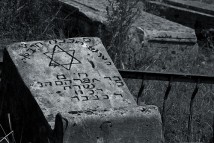Chagall's Menorahs (Passover)
The presence of God is represented almost universally in light and flame. The 7 candle menorah depicted in most of Chagall's work is the traditional symbol of Judaism used year-round in the tabernacle. The 9 candle menorah is used specifically to celebrate Chanukah, 8 for each day of the Festival of Lights plus the shamash, the "helper" used to light the others. Jewish/Russian-born painter Marc Chagall (1887-1985) was one of the 20th century's p...
Go Down, Moses (Passover)
A Negro Spiritual, America's first great original musical art form. In Marian Anderson's words, "the simple, direct and sincere contact with the soul of man thruout(sic) the world." Created from the depths of slavery & drawn from both the Old & New Testaments, these anthems of lament, joy, longing for freedom illuminate the natural kinship between the Black & Jewish experience. Hardly an accident that Jews & Blacks are the two primary sources of...
Hatikvah (The Hope) (Passover)
Translated as "The Hope," Israel's national anthem(officially as of 2004); words drawn from an 1877 poem by Ukrainian Naphtali Herz Imber, music inspired by a 16th century Italian song "La Mantovana," adapted to "Hatikvah" by Samuel Cohen in 1888. This theme is strikingly similar to the stirring Czech tone poem, "The Moldau" by Bedrich Smetana.
Hava Nagila (Passover)
"Hava Nagila"-Romanian/Ukrainian folk dance(hora); lyrics attributed to Jewish ethnologist Abraham Zevi Idelsohn, 1918, derived from the Old Testament, Psalm 118:Verse 24.
Raisins And Almonds (Passover)
"Rozhinkes mit Mandlen," Raisins and Almonds, metaphorically, the sweet with the bitter. Classic folk song written by Abraham Goldfaden (1840-1908), Ukrainian-born poet, playwright, actor, reputed producer of world's first professional Yiddish theatre. Emigrated to NY where, at his death, he was dubbed "the Yiddish Shakespeare."





